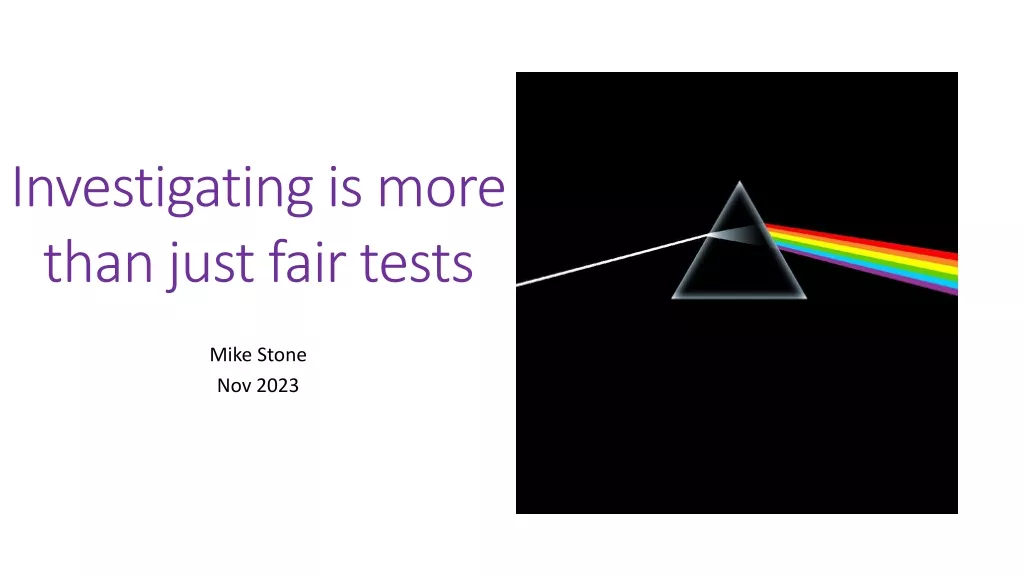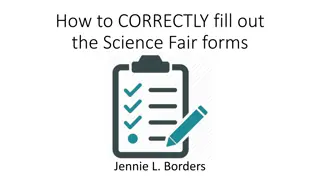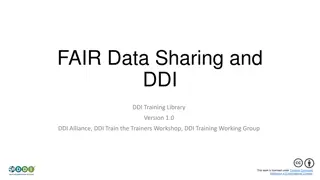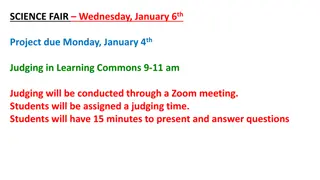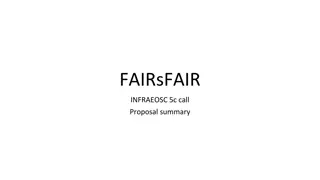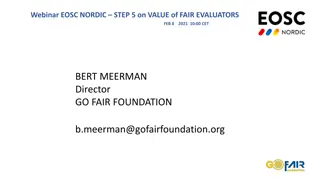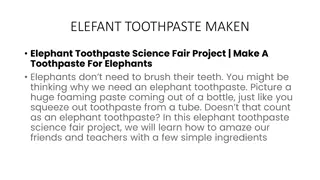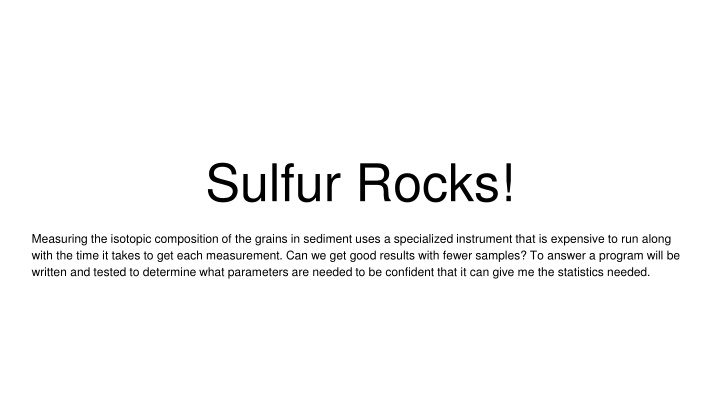
Sulfur Isotopic Composition in Sediment Grains
Explore how a specialized instrument is used to measure the isotopic composition of grains in sediment, focusing on a study of rocks from the past to understand environmental changes. A program is being developed to determine if sub-sampling can provide accurate results with fewer samples, impacting the analysis of sulfur isotopic composition and microbial activity in sediments.
Download Presentation

Please find below an Image/Link to download the presentation.
The content on the website is provided AS IS for your information and personal use only. It may not be sold, licensed, or shared on other websites without obtaining consent from the author. If you encounter any issues during the download, it is possible that the publisher has removed the file from their server.
You are allowed to download the files provided on this website for personal or commercial use, subject to the condition that they are used lawfully. All files are the property of their respective owners.
The content on the website is provided AS IS for your information and personal use only. It may not be sold, licensed, or shared on other websites without obtaining consent from the author.
E N D
Presentation Transcript
Sulfur Rocks! Measuring the isotopic composition of the grains in sediment uses a specialized instrument that is expensive to run along with the time it takes to get each measurement. Can we get good results with fewer samples? To answer a program will be written and tested to determine what parameters are needed to be confident that it can give me the statistics needed.
Testable Question and Hypothesis Question - Can a program be written to take a certain percent of sub-samples out of the total population at random and determine if the sub-population average is close enough to the original population average. Hypothesis - If the data is sub-sampled more times then the accuracy of the program will stabilize.
Background From 850,000 to 750,000 years ago sediments off the coast of southern Italy were settled down on the ocean floor. This was the same time that the sea level was changing because of Glacial periods and interglacial periods. The sediments from this time period today are rocks on land in Southern Italy. People have collected them and have been studying them for decades which makes them very well known about the paleoenvironment. Glacial periods- When much of the oceans water are locked in ice on land. The result being the sea level drops because the water is on land. Interglacial periods- When most of the ice in the glaciers melt and the sea level rises as a result. These show how the temperature changes. Paleoenvironment- The environment in the past when the sediments deposited.
Background Samples are gathered from the red star on the map. From previous studies during the interglacial periods the sediment settled down in deeper water because sea level was higher. During glacial periods the water was shallow and the same location was closer to shoreline. This increases the sedimentation rate. The hypothesis in Houghton and co- authors(2022) was that the changes in paleoenvironment were responsible for the shifts in sulfur isotopic composition of pyrite (Far right plot) Sulfur isotopic composition- The measured ratio of 34S to 32S. There is a large pool of sulfur in seawater. What gets left in the sediment is sulfur minerals. The isotopic composition of the minerals in the sediment are offset from the isotopic composition of sulfur in the water due to microbial activity. Pyrite- Is the dominant sulfur mineral in sediments. People use the isotopic composition of pyrite to figure out how the pool of sulfur in the ocean changes. microbial activity- Bacteria in sediments. (for this study its sulfate reducing bacteria).
Background The data used for the experiment was the isotopic composition of individual pyrite grains measured using Secondary Ion Mass Spectrometry (SIMS). Examples of these grains are shown on the top right. The distribution of the entire population of grains (Bottom graph) can be used to tell the history of changes in the environment. SIMS - Bombarding the sample with ions breaks apart all the bonds in the sample material. All of the atoms that are released get re-ionized (becoming the Secondary Ions), separated by mass and measured for individual isotopes. The materials coming off are the secondary ions that get measured to determine the isotopic ratio. https://wwwrcamnl.wr.usgs.gov/isoig/period/s_iig.html https://energyeducation.ca/encyclopedia/Glacial_and_interglacial_periods https://www.sciencedirect.com/science/article/abs/pii/S003101822100515 0?casa_token=QJ0D0XCDWFcAAAAA:5S7zQvHvYNGn-TJxQ7F3- eGazHBJzIcApdvMO4ekSyFOGb-SngnNBDn3QTxS0m0zNFcHy97e
Trials - These trials determine the percentage probability that the average of one sub- population of samples is within 0.25 of the total population average. - Question: How many times must the program be run in order to be confident with the results? - Independent variable - The thing that was changed was the number of times sub-samples were taken (1,000,000, 100,000, 10,000, 1,000, 100, and 10 times). Three trials were done for each of these. - Controlled variable - What was kept the same was the percent of data being sub-sampled (50%, 75%) as well as the range (dx) for this population 0.25 to either side. - Dependent variable - What was measured was the probability that the sub-sample average was within the given range of 0.25
#Example Program import numpy as np #Importing a module for doing math calculations in python Procedure and Conditions def subSample(numRun, fraction, fileName, dx): # '''numRun (integer) - The number of times a sub-populatoin is created. fraction (Float) - The percentage of data (As a fraction) being taken in each sub- population. fileName (String) - Name of the input file with the data in one value per line. dx (Float)- The amount of spread within averages.''' #Read file, open data. with open(fileName) as file: data = file.readlines() for i in range(len(data)): data[i] = float(data[i]) #Change from string to floating point numbers. numdata = len(data) #Finding the number of samples. popavg = np.average(data) #Finding the average of the full population of samples. popstdev = np.std(data) #Finding the standard deviation of the full population of samples. print("popavg =",popavg) print("popstdev =",popstdev) print("numdata =", numdata) Materials Methods Finding the spread of data 1. Organize the sample data (Plain Text Format with one value per line) 2. Write a program that. a. Randomly chooses a given percent of data (e.g. 50%) b. Out of the sub-population calculate the average, standard deviation and number of samples. c. Find if the average is within the given range (dx). d. Repeat a set number of times. (numRun). e. Calculate the percentage of sub-populations that are within the range. f. See code SIMS Data Laptop outAverage=[] #Creating arrays to store the results. outStDeviation=[] nbetween = 0 #Initializing the counter for the number of times the average of the data set goes over or under dx. for i in range(numRun): #creating a loop n = int(numdata*fraction) #50% of the TextureData d = np.random.choice(data, n, False) #Selecting random data and not repeating. sampleAvg = np.average(d) #Finding the average of the sub-population. samplestdev = np.std(d) #Finding the standard deviation of the sub-population. outAverage.append(sampleAvg) #Recording averages from each sub-population. outStDeviation.append(samplestdev) if ((sampleAvg >= -40 - dx) and (sampleAvg <= -40 + dx)): #Checking if the sample average is within dx+dx. nbetween += 1 #Adding 1 to nbetween for every inbetween number. percentBet = nbetween/numRun #Finding one percentage for what is inside the dx range. print(f'Percentage = {percentBet}') #print(outAverage) popavgAvg = np.average(outAverage) #Finding the average of the averages print("popavgAvg", popavgAvg) print() subSample(100000, .5, "TextureData.csv", .25) subSample(100000, .75, "TextureData.csv", .25)
Results For a confident number to be calculated, the program must be run at least 1,000 times at 75%. The results show that the spread of the averages diminishes as the program is run more times. As the percentage of the sub-population gets lower the more runs are necessary to stabilize the range. Going from 1,000 runs at 75% to 10,000 runs at 50% in order to get an accurate number proves the hypothesis.
Conclusion The information gathered calibrated the program and is the first experiment to show whether the usage of the program is viable with the data given and the accuracy at which the program answers the bigger question. The process takes many more steps with the accuracy being the number one priority to start implementing the program into a more regular use. The experiment will be continued with many more questions to be answered. Through the process along with understanding how to write the program I have learned how to calibrate and refine the program to gather confident and accurate results.

